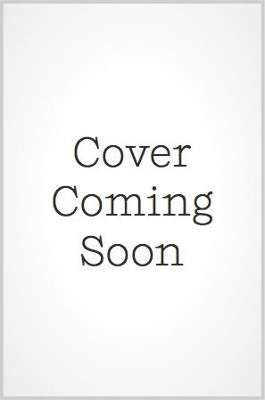
Clean
Riverhead Books,U.S. (Verlag)
978-0-593-32876-7 (ISBN)
- Titel ist leider vergriffen;
keine Neuauflage - Artikel merken
One of Smithsonian's Ten Best Science Books of 2020
A searching and vital explication of germ theory, social norms, and what the modern era is really doing to our bodies and our psyches. Vanity Fair
A preventative medicine physician and staff writer for The Atlantic explains the surprising and unintended effects of our hygiene practices in this informative and entertaining introduction to the new science of skin microbes and probiotics.
Keeping skin healthy is a booming industry, and yet it seems like almost no one agrees on what actually works. Confusing messages from health authorities and ineffective treatments have left many people desperate for reliable solutions. An enormous alternative industry is filling the void, selling products that are often of questionable safety and totally unknown effectiveness.
In Clean, doctor and journalist James Hamblin explores how we got here, examining the science and culture of how we care for our skin today. He talks to dermatologists, microbiologists, allergists, immunologists, aestheticians, bar-soap enthusiasts, venture capitalists, Amish people, theologians, and straight-up scam artists, trying to figure out what it really means to be clean. He even experiments with giving up showers entirely, and discovers that he is not alone.
Along the way, he realizes that most of our standards of cleanliness are less related to health than most people think. A major part of the picture has been missing: a little-known ecosystem known as the skin microbiome the trillions of microbes that live on our skin and in our pores. These microbes are not dangerous; they re more like an outer layer of skin that no one knew we had, and they influence everything from acne, eczema, and dry skin, to how we smell. The new goal of skin care will be to cultivate a healthy biome and to embrace the meaning of clean in the natural sense. This can mean doing much less, saving time, money, energy, water, and plastic bottles in the process.
Lucid, accessible, and deeply researched, Clean explores the ongoing, radical change in the way we think about our skin, introducing readers to the emerging science that will be at the forefront of health and wellness conversations in coming years.
lt;b>James Hamblin, MD, MPH, is a staff writer at The Atlantic, a lecturer at the Yale School of Public Health, and a specialist in preventive medicine. He is the author of If Our Bodies Could Talk and hosted a video series of the same name. He s based in Brooklyn, New York. He only uses soap on his hands.
I
Awaken
I walk off the elevator into a palatial, sun-soaked office looming seven stories over Bryant Park in Manhattan. It's the fall of 2018, some three years since I last washed my face. I'm here to see what the effects have been.
The herringbone wood floors are decorated with floral bouquets as tall as any human. The fireplace has a white mantel, and ethereal flute-based music wafts over me from somewhere. A bed draped in white linens awaits under a chandelier. This is the headquarters of an up-and-blazingly-coming skin care company called Peach and Lily. It's based in the Korean tradition and part of a Westernized movement commonly known as "K-beauty" that centers on maintenance of one's skin, often through a ritual of cleansing, toning, moisturizing, and sheet masking that can include ten or more steps.
The company's founder, Alicia Yoon, holds an MBA at Harvard Business School. She is also an esthetician, perhaps best known for her work in popularizing the application of snail secretions to the skin. In just two years, Yoon took Peach and Lily from a small internet boutique to a full line of original products distributed at retailers like Urban Outfitters and CVS. The company arrived on the crest of an enormous wave. In South Korea, where K-beauty is based on long-standing tradition, the industry has exploded to more than $13 billion per year. Its newfound popularity in the U.S. has helped make skin care a faster-growing segment of the beauty industry than makeup. Sales of high-end skin care grew 13 percent in 2018 alone, significantly faster than GDP.
I'm greeted at the elevator by a cheery assistant who asks me to disrobe. I explain that I've come to have a facial. She laughs and says she knows that, then hands me a robe and a questionnaire about my skin care routine and leaves me to change.
Alone in the space, I turn to the questionnaire, which looks like a form you might fill out in the waiting room of a doctor's office. There is a question about allergies and diet, along with a battery of questions about my skin: What exfoliants do I use? What moisturizers? What serums? What cleansers? How often have I been using each and in what order and combination?
This is a brief exercise for me, since I've been doing nothing. Yoon enters and welcomes me graciously, but the tone shifts when she sees the mostly blank form and learns that I have not simply forgotten to fill it out. "Oh my god," she says. "Are you safe to have a facial?"
"Yes! Of course-wait, why would I not be?" I hadn't really considered I was at risk before. Suddenly I'm worried. "I don't know-I mean, you tell me."
"It should probably be fine, I've just never done this on anyone . . . like this before," she trails off, either sad or disappointed or maybe both.
I lie down and she puts a bright light over my face. She touches my cheek lightly with her fingertip, then a little more firmly. Hesitantly, she says, "Have you ever felt your face?"
Funny she should ask.
I have made a point of almost never touching my face, ever since I was a teenager with "bad skin" who was under the now-obsolete impression that acne is caused by not cleaning well or aggressively enough. There were times the acne would extend to my eyelid as a stye that would nearly swell my eye shut. Social interaction became impossible because the appearance of my eye sucked all the attention out of any conversation. Even after my skin cleared up in college, I held on to the habit of keeping my hands-and the bacteria and viruses they carried-away from my face.
Not wanting to get into this long backstory, I tell Yoon that I touch my face "the normal amount," and she gets to work.
Yoon is no stranger to "problem" skin. She spent much of her life battling severe eczema, at times scratching her inflame
| Erscheinungsdatum | 02.06.2020 |
|---|---|
| Sprache | englisch |
| Maße | 153 x 229 mm |
| Gewicht | 306 g |
| Themenwelt | Sachbuch/Ratgeber ► Gesundheit / Leben / Psychologie ► Schönheit / Kosmetik |
| Naturwissenschaften ► Biologie ► Mikrobiologie / Immunologie | |
| Wirtschaft ► Betriebswirtschaft / Management ► Marketing / Vertrieb | |
| Wirtschaft ► Volkswirtschaftslehre ► Mikroökonomie | |
| Schlagworte | acne • Beauty • beauty books • Behavioral Economics • business • business books • clean • Consumer Behavior • economics books • economy • eczema • Epidemic • Fashion • gifts for her • gifts for women • hand sanitizer • Handwashing • Health • Health and Fitness • health and wellness • health books • Hygiene • Influence • Makeup • microbes • Microbiology • microbiome • Minimalism • MONEY • New Yorker • Pandemic • Psychology • psychology books • Science • science book • science books • science gift • science gifts • self care • self care books • showering • Skin • skincare • skincare books • SOAP • Virus • Wellness • wellness books |
| ISBN-10 | 0-593-32876-0 / 0593328760 |
| ISBN-13 | 978-0-593-32876-7 / 9780593328767 |
| Zustand | Neuware |
| Haben Sie eine Frage zum Produkt? |
aus dem Bereich


